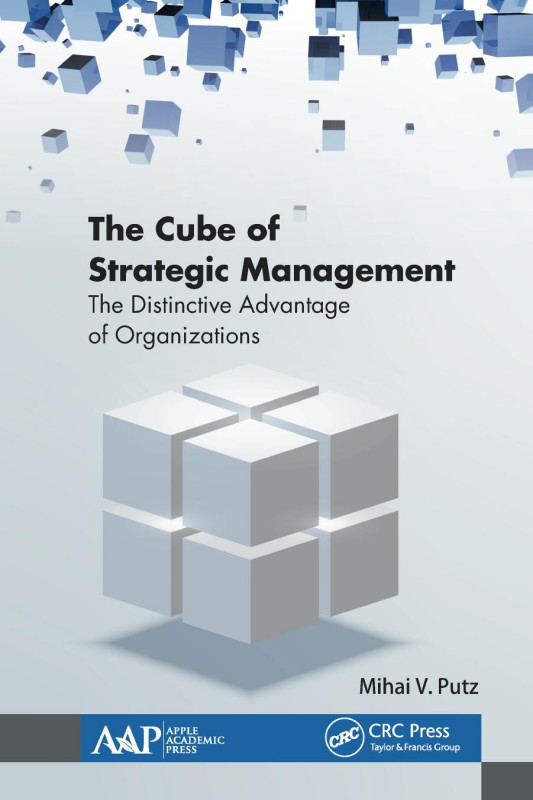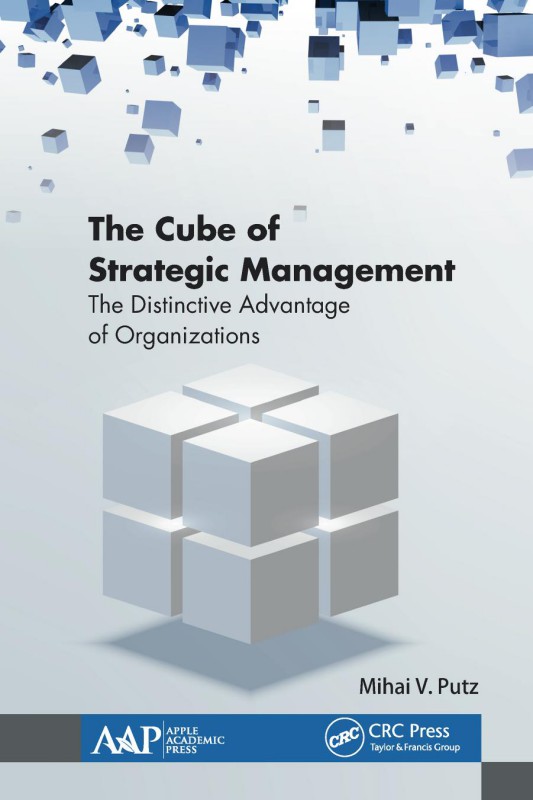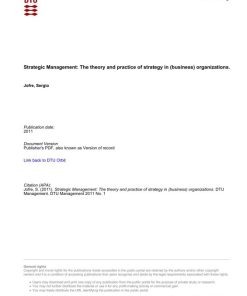The Cube of Strategic Management The Distinctive Advantage of Organizations 1st edition by Mihal Putz ISBN 1771887753 978-1771887755
$50.00 Original price was: $50.00.$25.00Current price is: $25.00.
Authors:Mihai V. Putz , Series:Strategic Studies [153] , Author sort:Putz, Mihai V. , Languages:Languages:eng , Published:Published:Aug 2019 , Publisher:CRC Press
The Cube of Strategic Management: The Distinctive Advantage of Organizations 1st edition by Mihal Putz – Ebook PDF Instant Download/Delivery. 1771887753 978-1771887755
Full download The Cube of Strategic Management: The Distinctive Advantage of Organizations 1st edition after payment

Product details:
ISBN 10: 1771887753
ISBN 13: 978-1771887755
Author: Mihal Putz
The Cube of Strategic Management: The Distinctive Advantage of Organizations is a trans-disciplinary book that introduces the author’s new business model of the geometrization of management. The author advocates that strategic management has to shift to include a science and technology perspective, to not only support business administration but also to make this scientific perspective an inherent part of management strategy building. The book spans the fundamental and the theoretical aspects and advances this new management model in response to the current and future 21st-century synergic interconnection needs in addressing management and marketing post-modern strategies.
The book is a quintessence of the historical theories of the various 8th fold ideas of management (Taylor, Drucker, Peters & Waterman, Covey) and applies them in an innovative new way. The author uses the cube and its 8 corners for the first time to represent 8 forms of the strategic management way of business, in that the 8 corners of a cube represent the competitive advantage of (any) organization.
The Cube of Strategic Management: The Distinctive Advantage of Organizations 1st Table of contents:
Introduction to Strategic Management and the Cube Model
- 1.1 What is Strategic Management?
- 1.2 The Cube of Strategic Management: Overview and Purpose
- 1.3 The Role of Distinctive Advantage in Organizational Success
- 1.4 How the Cube Model Enhances Strategic Thinking
2. The Dimensions of the Cube of Strategic Management
- 2.1 The Three Primary Dimensions of the Cube
- 2.2 Integrating Strategy, Structure, and Culture
- 2.3 The Interplay Between External and Internal Factors
- 2.4 How Each Dimension Contributes to Competitive Advantage
3. Strategic Thinking and Organizational Awareness
- 3.1 Understanding Organizational Identity and Purpose
- 3.2 Developing Strategic Thinking and Leadership
- 3.3 Mapping Organizational Strengths, Weaknesses, and Opportunities
- 3.4 The Role of Vision and Mission in Strategic Decisions
4. Creating and Sustaining a Distinctive Advantage
- 4.1 What is a Distinctive Advantage?
- 4.2 Key Drivers of Competitive Advantage
- 4.3 Sustainable vs. Temporary Advantages
- 4.4 Realizing Distinctive Advantage through Innovation and Differentiation
5. Strategic Analysis and Competitive Positioning
- 5.1 Conducting a Strategic Analysis of the External Environment
- 5.2 Tools for Competitive Positioning: Porter’s Five Forces and Beyond
- 5.3 SWOT Analysis and the Cube Framework
- 5.4 Assessing Organizational Capabilities and Resources
6. Aligning Strategy, Structure, and Culture
- 6.1 The Importance of Organizational Structure in Strategic Success
- 6.2 Cultural Alignment for Strategic Execution
- 6.3 Adapting Strategy to Organizational Capabilities
- 6.4 Leading Organizational Change through Structural Adjustments
7. Implementing Strategy for Distinctive Advantage
- 7.1 The Challenges of Strategy Implementation
- 7.2 The Role of Leadership in Execution
- 7.3 Building Effective Teams and Systems for Strategy Deployment
- 7.4 Monitoring and Adapting Strategies for Long-Term Success
8. Innovation and the Cube of Strategic Management
- 8.1 The Role of Innovation in Achieving Distinctive Advantage
- 8.2 Balancing Incremental and Radical Innovation
- 8.3 Leveraging Technology for Strategic Advantage
- 8.4 Creating a Culture of Innovation within the Cube Framework
9. Managing Change and Strategic Agility
- 9.1 The Need for Strategic Agility in a Dynamic Environment
- 9.2 Managing Organizational Change within the Cube
- 9.3 Leading Through Disruptive Changes and Uncertainty
- 9.4 Building a Resilient Organization for the Future
10. Global Strategy and Competitive Advantage
- 10.1 Navigating Global Markets and Expanding Internationally
- 10.2 The Cube Model in a Global Context
- 10.3 Leveraging Global Networks and Alliances for Strategic Advantage
- 10.4 Ethical and Cultural Considerations in Global Strategy
11. Evaluating Strategic Performance and Measuring Success
- 11.1 Defining Strategic Performance Metrics
- 11.2 Key Performance Indicators for Distinctive Advantage
- 11.3 Continuous Improvement and Benchmarking
- 11.4 Case Studies in Measuring Strategic Success
12. The Future of Strategic Management
- 12.1 Emerging Trends in Strategic Management
- 12.2 The Evolving Role of the Cube in Future Business Strategy
- 12.3 Preparing Organizations for the Future: Innovation, Sustainability, and Growth
- 12.4 The Changing Role of Leadership in Strategic Management
13. Conclusion: Maximizing the Distinctive Advantage
- 13.1 Final Insights on Achieving Long-Term Competitive Advantage
- 13.2 The Future of the Cube Model in Strategic Management
- 13.3 Strategic Takeaways for Organizational Leaders
People also search for The Cube of Strategic Management: The Distinctive Advantage of Organizations 1st:
the cube strategy
the office of strategy management pdf
the management of strategy in the marketplace
what is the cube strategy in math
strategic cube












